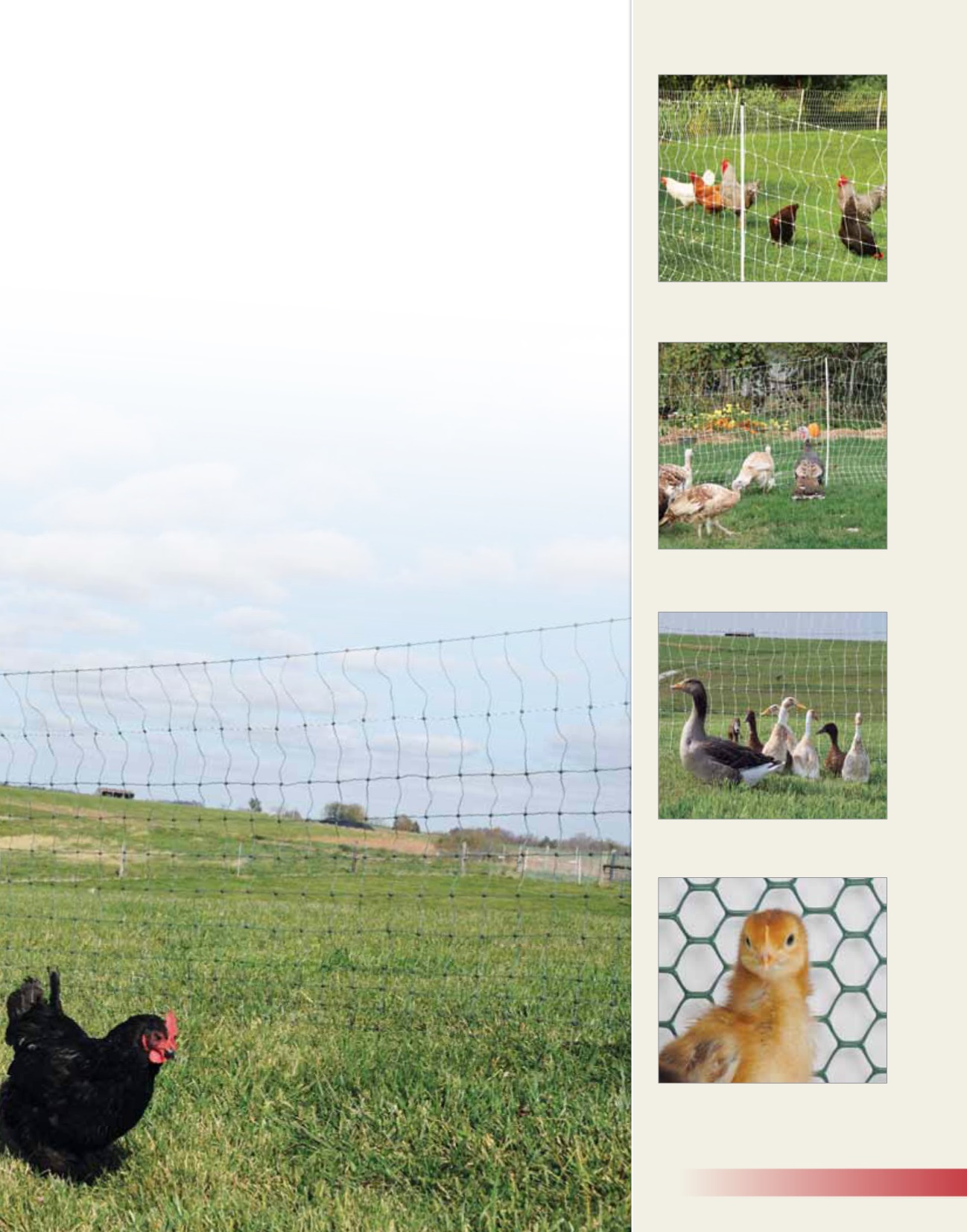 www.premier1supplies.com •
www.premier1supplies.com •
1-800-282-6631 POULTRY FENCES 31
Temporary
PoultryNet 48", pp. 34–35
Temporary
PoultryNet 42", pp. 32–33
Semi-Permanent
PermaNet 48", pp. 36–37
Non-Electrifiable
NoShock Chick Fence 48", p. 38
What about grass contact?
This is netting’s biggest negative. Too
much green grass or weed contact lowers the
voltage of the fence. So:
1. When grass gets 6" high, turn off the
energizer. Mow along the fence
. If you
mow into the fence your wallet, the mower
and the net will all regret it
! Move the net
into the mowed strip by removing and
reinstalling one post at a time. Turn on
the energizer. Takes 5 minutes per net.
2. Or spray herbicide in a narrow strip
under the fence
(see p. 13)
. No herbicide
lasts forever so expect the weeds to
return in time. We prefer burn-down
chemicals that don’t kill perennials.
3. Or buy an energizer large enough to
cope with extra weed contact.
Which is the best height?
While both heights stop most poultry, the
48" net is perceived as more secure against
coyotes and dogs.
However, the shorter 42" net is lighter
and easier to handle when installing and
removing. It’s also less expensive.
Common issues
If net is not properly tensioned or there is a
rise in the terrain between posts, the bottom
part of the net will bow. This is not a concern
unless the lowest electrified strand touches
the soil. If this occurs, retension and add a
FiberTuff support post at problem areas.
Note: PoultryNet won’t stop young birds small
enough to slip through the 2" x 3" net openings.
So, for the first weeks when birds are small, we
suggest keeping them inside the coop or making
a small temporary pen with NoShock Chick
Fence inside the electrified netting for predator
protection (p. 38).
Durability
Our nets will last 10 seasons if used
properly. Their primary enemy? Errant
lawn mowers, overgrown vegetation and
ice storms.
Free Shipping! If order exceeds $100. (Details on p. 5.)To install
The same process
(see p. 111)
applies to
all electrified nets. It requires minimal
strength, tools and skill.
You will need extra support posts
at corners, curves and ends
(see pp.
121-127)
.
You will need a fence energizer
to electrify any and all electrified
netting. Test the far end of the fence to
make sure it’s at least 3000v.
Warning: Don’t attempt to step
over this net—ever. Instead, turn off
energizer, remove an end post and
walk through the opening.









